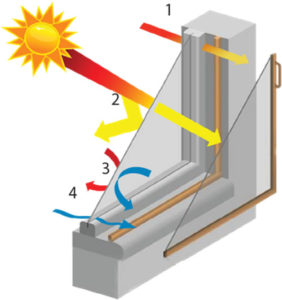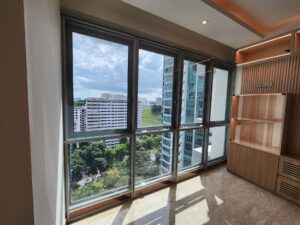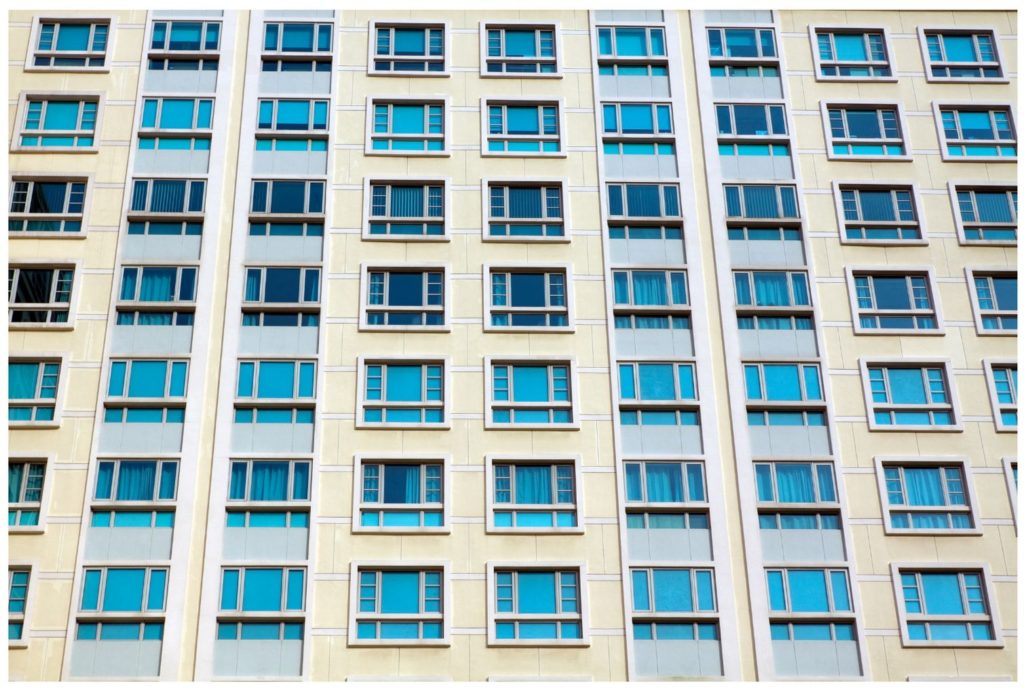
Last month we looked at double glazing for window soundproofing (read it here), this month we want to dive deeper into glazing options when considering sound reduction through a window.
We want to start with some terminology that you might have heard:
Glazing: Glass or acrylic sheet in a window or door. It is also the physical act of adding glass or acrylic to a unit.
Single glazing: Use of a single pane of glass in a window or door, commonly found in standard, residential applications. May or may not be safety glass, depending on height of window and location.
Double glazing: Use of two panes of glazing in a window system to increase energy efficiency and provide noise reduction. May or may not refer to an insulating glass unit (IGU).
Insulating glass unit: (IGU) They are designed mainly for thermal insulation but some units also target acoustic insulation depending on glass type, air-gap and coatings. An insulating glass unit commonly consists of two (sometimes more) panes of glass separated by a spacer material and sealed together at the edge. (Read more in THIS blog post)
Triple glazing: Use of three panes of glass or plastic with two airspaces between.
Low E – Low E glass stands for Low Emissivity Glass. It is a glass coating developed to provide improved solar heat gain coefficient performance. It is most commonly applied to the exterior pane of glass facing the inner air-gap in a double-glazed window.
Tempered glass: Glass that is heat-treated to withstand greater than normal forces on its surface. When it breaks, it shatters into tiny pieces to reduce the hazard of large shards. Shower enclosures, wall cladding and internal glass walls are often made of this. Tempered glass has no noise or thermal insulation qualities.
Safety glass: A strengthened or reinforced glass that is less subject to breakage or splintering and less likely to cause injury if broken. Both laminated and tempered glass are types of safety glass.
Laminated glass: Two or more sheets of glass with an inner layer of transparent plastic to which the glass adheres if broken. Used for enhanced safety and security.
Acoustic glass: Laminated glass that has been coated with a PVB layer that has specific sound reducing properties
Polyvinyl Butyral (PVB): Plastic material used as the interlayer in the construction of acoustic laminated glass.
Clear Acrylic: Thermoplastic glazing material with higher transparency rate than glass.
Tempered, safety and Low-E glass are treated for functions that have no influence on the soundproofing property of the glass. If installing laminated, IGUs or double glazing into your window the sound reduction effect will depend on the detailed specification of the glass.
We’ll look today in more detail into the two main glazing materials found in Singapore – glass and acrylic. The application of each differs according to their type, thickness and how the structure of the window is made.

GLASS:
Let’s look at a standard, residential window: The majority of windows in residential homes are made with a thin, single sheet of glass within a frame. Single pane glass on its own does not offer much protection from noise or heat transmission, however, the effectiveness of the window relies on more than just the glass alone. The soundproof quality of all the window materials and components, combined with how the window seals and operates, are major contributors to how your window performs acoustically.
Glass is a rigid, hard material that is made in a wide variety of thicknesses and treatments, and is customised to you exact need whether it be acoustic or heat. Due to it being robust it is suitable for external window applications as it withstands the temperature differences well and doesn’t scratch easily. However, glass on its own is not a good absorber of sound due to it being rigid and hard. But it can reflect sound to a certain degree, depending on the thickness and type of glass. The general rule is the thicker the glass then the more noise it can reflect.
Thicker glass performs better for sound but the best type of glass for soundproofing is laminated acoustic glass within a double-glazed window system with a suitable air-gap. You can read more about air-gaps in our previous blog here.
Acoustic glass is a laminated glass that has been coated with a clear, optical grade resin or plastic such as that for a car windscreen. However, not all laminated glass is acoustic. Specific acoustic glass is coated with polyvinyl butyral (PVB) which strongly binds the glazing together and absorbs sound better than a standard laminated glass pane would. The effectiveness of laminated glass depends on the interlayer and thickness of the glass used. To ensure you know if you are getting a glass suitable for your needs, ask you supplier for an acoustic test certificate.

In bigger commercial projects where windows need a high level of acoustic insulation, such as a recording studio, it is often found that the glass in each panel in the window are different thicknesses. This is to combat the resonance frequency of each glass which improves the acoustic result. All glass has a different resonant frequency depending on its thickness, which allows it to harmonise with a certain sound level and amplify it. Think of the ringing sound a drinking glass makes when you tap on it with a spoon. So, using two laminated acoustic glass panes of different thicknesses enables the window to combat the frequencies transmitted by each other, therefore lowering the noise transmission.
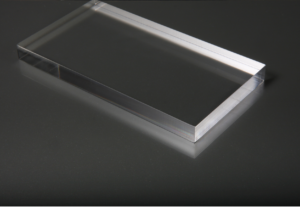
ACRYLIC:
Acrylic comes into the picture when looking to soundproof an existing window. At Magnetite, we install our Noise Shields, which is a secondary, add-on glazing, on the interior side of a window that is already in place. We create double glazing by utilizing the existing window glass as first layer and our Noise Shield as the second layer with an air-gap in between.
Acrylic is a good dampener and absorber of sound (because it is made of a softer material than glass). The same applies that the thicker the acrylic, the more noise it is able to absorb.
It can also be adjusted on site, unlike glass, which cannot be altered after it has been treated. In addition, it is 18 x stronger than glass and does not shatter, so using it for internal soundproofing is a win-win for safety. Acrylic is more cost effective and lighter in weight than specialist glass, so you can maximise the soundproofing qualities with a thicker acrylic.
As mentioned earlier, the soundproofing of a window is improved with glazing of different and greater thicknesses, therefore adding our acrylic to the window cavity greatly increases the acoustic performance not only because it is a thicker sheet than most existing glass windows (we use 10mm acrylic), but also because we create a big air-gap between the existing window and our Noise Shield, which is an essential part of reducing noise.
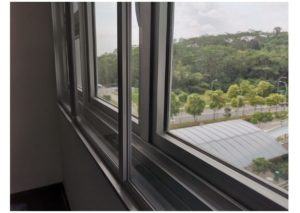
To demonstrate the increased acoustic performance of acrylic, we can look at the Weighted Sound Reduction Index of our acrylic Noise Shields versus other traditional glass window products:
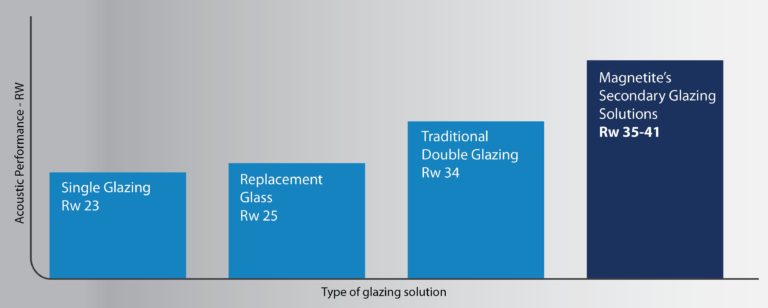
A Weighted Sound Reduction Index or Rw, is the rating used to measure the level of sound insulating abilities of elements in a building, such as walls, windows and doors. It is expressed in decibels (dB). As you can see from the graph above, changing your glass alone will only give you a small, virtually inaudible difference to noise insulation. It is important to note that replacing the glass in your existing window frame is not advised as it can often bend the frame and reduce the efficiency of the window.
In conclusion, if you are looking for glazing in a new external window, acoustic laminated glass included in an IGU unit will be your best choice, if you are looking to add on to existing windows, 10mm acrylic glazing will give you best results. However, the overall soundproofing quality of your window is not only dependent on the glazing alone. It is important to look at all the window components and how they work together as a complete system.
Look out for our next blog article in which we will go back to basics and explore the fundamentals of sound. You can read it here.
In the meantime, you can have a look at how our Noise Shields work here.

